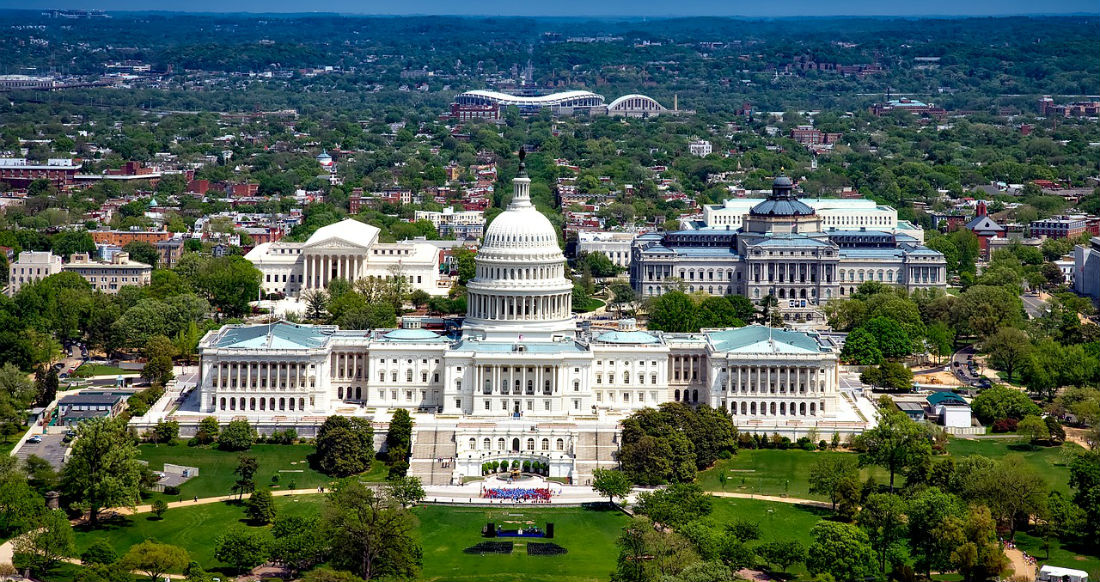Federal Workforce Reductions Drive DC Housing Inventory to 3-Year High
Record-Breaking Housing Inventory Surge in the Nation's Capital
The Washington, DC metropolitan area is experiencing an unprecedented shift in its real estate landscape as active home listings surged by 25.1% year-over-year through late April 2025, reaching levels not seen since 2022. This remarkable increase—the largest on record—significantly outpaces the national average of 14.2% and appears directly connected to the substantial federal workforce reductions implemented by the Trump administration.
The dramatic inventory growth isn't occurring in isolation. New listings in the DC metro area have jumped 11.4% compared to the same period last year, nearly doubling the national increase of 5.8%. This influx of properties hitting the market indicates a fundamental shift in the capital's real estate dynamics as government employment contracts.
"Many homeowners are listing their properties because of job losses in the federal sector," explains Mary Bazargan, a Redfin Premier real estate agent serving the DC area. "With the high cost of living in the District, those affected by layoffs are increasingly looking to relocate to more affordable regions, often seeking remote work opportunities that allow them to move closer to family support systems."
The DOGE Effect: Government Efficiency Measures Transform Housing Market
The seismic shift in DC's housing market can be largely attributed to the Department of Government Efficiency (DOGE), led by Elon Musk. This initiative has resulted in approximately 121,000 federal workers being laid off or targeted for reduction since President Trump's administration began in January 2025.
The impact is particularly pronounced in Washington, DC, where federal employment comprises 11.1% of all jobs—the highest concentration among major U.S. metropolitan areas according to analysis by APM Research Lab. While initial unemployment claims peaked in February, real estate professionals anticipate another surge as recently announced layoffs take effect and as severance packages expire for earlier terminated employees.
Bazargan notes a significant increase in consultations with potential sellers who are awaiting news about their employment status, with many decisions expected by June. "The uncertainty in government employment is creating a ripple effect throughout the entire housing ecosystem," she adds.
DC Suburbs Experience Steeper Inventory Growth Than the District Proper
The inventory surge isn't uniform across the metropolitan area. The analysis reveals that DC's suburban counties—where many federal workers and government contractors reside—are seeing the most dramatic increases in available housing:
- Alexandria, VA leads with a staggering 40.9% year-over-year increase in active listings
- Montgomery County, MD follows closely with a 38.5% increase
- Loudoun County, VA rounds out the top three with a 36.8% rise
By contrast, the District of Columbia itself experienced a more modest (though still significant) increase of 14.9%, suggesting that the impact of federal workforce reductions is most acutely felt in the commuter communities surrounding the capital.
This pattern aligns with reporting from the Washington Post, which identified the U.S. Department of Health and Human Services as among the agencies most severely affected by layoffs, with job losses concentrated in Montgomery, Frederick, and Prince George's counties.
Market Paradox: Rising Inventory Amid Strong Price Growth
Despite the substantial increase in available properties, the DC housing market exhibits resilience in several key metrics:
- The median home sale price in Washington, DC increased by 4.1% year-over-year to $600,964, outpacing the national growth rate of 1.9% ($387,855)
- Homes continue to sell significantly faster than the national average, with a median of 26 days on market compared to 39 days nationally
- 57.1% of DC homes went off market within two weeks, far exceeding the national figure of 39.9%
- 44.1% of homes sold above list price versus just 27.2% nationwide
- The average sale-to-list price ratio stands at 100.6%, indicating that sellers are typically receiving more than their asking price
These statistics paint a picture of a market that, while experiencing rapid inventory growth, remains competitive for buyers. The sustained price appreciation and quick sales suggest that housing demand in the capital region remains robust despite the employment uncertainty.
"What we're witnessing could be a preview of trends that might emerge in other housing markets across the country," observes Redfin Senior Economist Asad Khan. "While strong demand is currently supporting home values in DC, other regions may not have the same buffer against inventory growth, potentially leading to price moderation."
Potential National Implications and Future Outlook
The DC housing market transformation may serve as a harbinger for other regions, particularly those with high concentrations of federal employment or industries dependent on government contracts. Nine major metropolitan areas are already experiencing even larger inventory increases than Washington, with Denver leading the pack.
Historical analysis indicates that while housing inventory typically fluctuates during presidential transitions, the current surge appears uniquely pronounced and persistent. Data from Trump's first term in 2017 showed an initial increase in listings following inauguration, but that trend had stabilized by spring—unlike the continuing growth observed in 2025.
As the federal workforce contraction continues, market observers anticipate further evolution in the DC housing landscape. Cash buyers may gain additional leverage as sellers grow increasingly concerned about financing contingencies in a job market characterized by uncertainty.
Market Insights
Why is the DC housing inventory increasing so dramatically?
The record 25.1% increase in active listings is primarily driven by federal workforce reductions, with approximately 121,000 federal workers laid off or targeted for layoffs since January 2025. As government employees lose their positions, many are choosing to sell their homes and relocate to more affordable areas that offer remote work opportunities.
How does the DC housing market compare to national trends?
While the national housing inventory increased by 14.2%, DC's 25.1% surge significantly outpaces the average. Similarly, new listings in DC grew by 11.4% compared to the national increase of 5.8%. Despite this inventory growth, DC home prices are rising faster than the national average (4.1% vs. 1.9%), and properties are selling more quickly (26 days on market vs. 39 days nationally).
Which areas around DC are most affected by the housing surge?
The suburban counties surrounding DC proper are experiencing the most dramatic inventory increases, with Alexandria, VA (40.9%), Montgomery County, MD (38.5%), and Loudoun County, VA (36.8%) showing the largest year-over-year growth. These areas typically house many federal workers and government contractors.
Is this housing inventory surge normal during presidential transitions?
Historical data analysis suggests this is not simply a normal transition effect. While housing inventory did increase following Trump's first inauguration in 2017, that trend had normalized by spring of that year. The current persistent growth pattern appears more directly connected to specific government workforce reduction policies.
What might this mean for other housing markets across the country?
Economists suggest the DC market could be a leading indicator for other regions, particularly those with high concentrations of federal employment. While strong demand is currently supporting DC home values despite increasing inventory, markets with weaker demand fundamentals might experience price softening if they face similar inventory growth.












